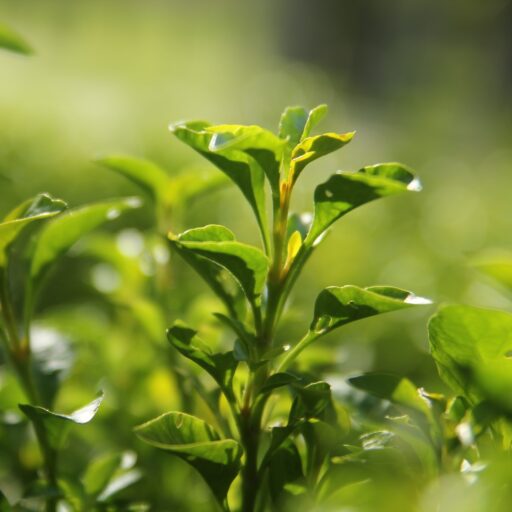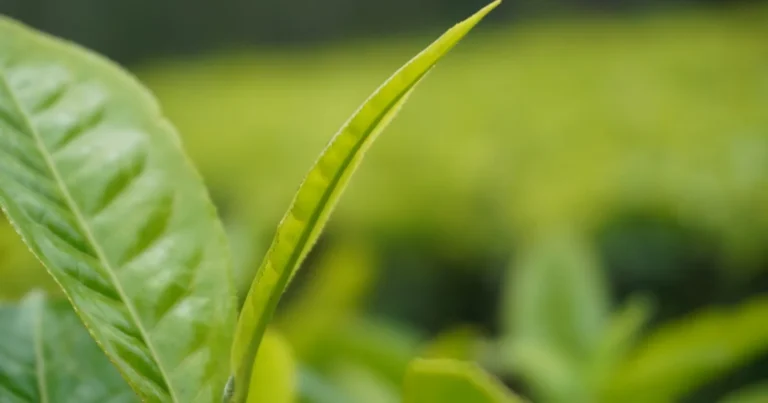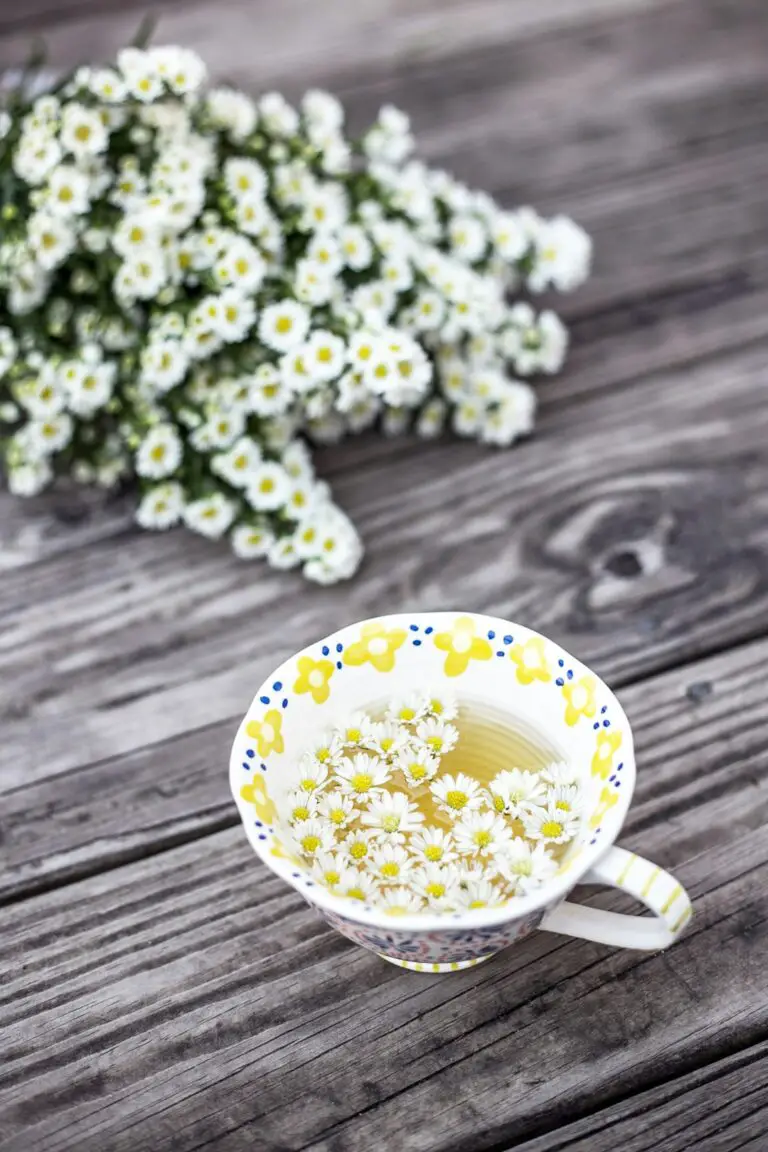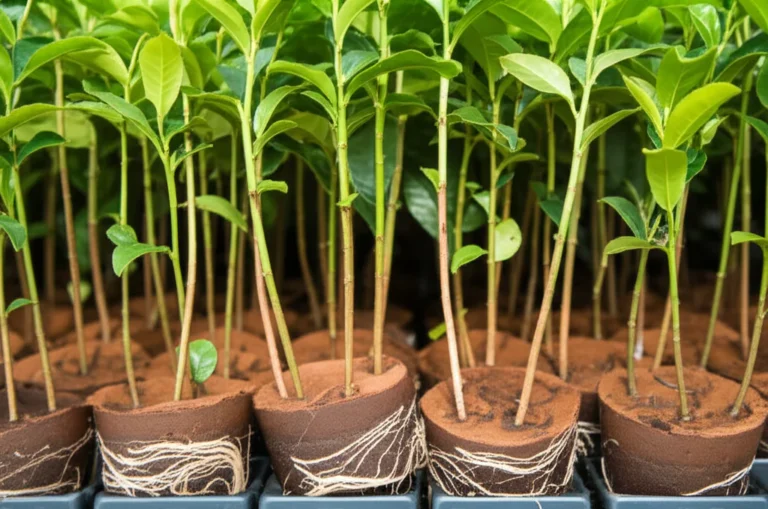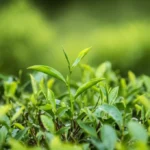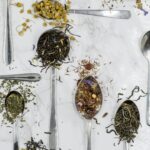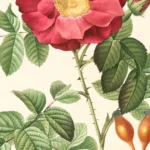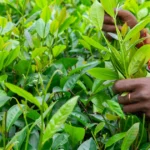Support our educational content for free when you purchase through links on our site. Learn more
12 Best Tea Plant Varieties for Growing in the US 🌿 (2025)
Have you ever dreamed of plucking fresh tea leaves from your own garden and brewing a cup that tastes like a million-dollar specialty tea? You’re not alone! Growing tea plants in the US is no longer a far-fetched idea reserved for tropical climates. Thanks to decades of cultivation research and hardy cultivar development, tea gardening is blossoming across diverse American climates—from the humid South to the misty Pacific Northwest.
In this guide, we unveil 12 top tea plant varieties perfectly suited for US gardeners, whether you’re a seasoned green thumb or a curious newbie. We’ll share insider tips on climate zones, soil secrets, and even how to process your own leaves into green, black, or oolong teas. Plus, discover surprising cultivars like Hawaii’s ‘Kona’ and Japan’s famed ‘Yabukita’ that thrive right here at home. Ready to turn your backyard into a tea lover’s paradise? Let’s dive in!
Key Takeaways
- All true teas come from Camellia sinensis, but different varieties thrive in different US climates.
- USDA Zones 7-10 are ideal, with some cold-hardy cultivars pushing into Zone 6 with protection.
- The classic China type (sinensis) suits cooler areas; the robust Assam type (assamica) loves warm, humid regions.
- Unique cultivars like ‘Yabukita’, ‘Benikaori’, and ‘Purple Leaf’ offer exciting flavors and growing traits.
- Proper soil acidity (pH 4.5-5.5), watering, and pruning are essential for healthy tea plants.
- Processing your own leaves unlocks a world of tea styles—from delicate whites to bold blacks.
- Joining communities like the US League of Tea Growers can boost your success and enjoyment.
Ready to pick your perfect tea plant? Scroll down to explore our detailed cultivar profiles and expert growing advice!
Table of Contents
- ⚡️ Quick Tips and Facts for US Tea Growers
- 🌿 The Ancestry of Your Brew: A Brief History of Tea Plant Cultivation
- 🌱 Understanding the Tea Plant: Camellia sinensis Unpacked
- 🗺️ Where in the US Can You Grow Tea? Regional Suitability & Climate Zones
- 🏆 Our Top Picks: Best Tea Plant Varieties for Growing in the US
- The Classic China Bush: Camellia sinensis var. sinensis
- The Robust Assam Tree: Camellia sinensis var. assamica
- Hawaii’s Own: Camellia sinensis ‘Kona’
- Japan’s Green Tea Star: Camellia sinensis ‘Yabukita’
- A Japanese Black Tea Gem: Camellia sinensis ‘Benikaori’
- Historical Chinese Cultivar: Camellia sinensis ‘Bohea’
- Antioxidant Powerhouse: Camellia sinensis ‘Purple Leaf’
- Cold-Hardy & Prolific: Camellia sinensis ‘Small Leaf China’
- For Stronger Brews: Camellia sinensis ‘Large Leaf Assam’
- The Champagne of Teas: Camellia sinensis ‘Darjeeling’ (Hybrid Types)
- Korean Cold-Tolerant Cultivars: Camellia sinensis ‘Korean’
- The Versatile Hybrid: Camellia sinensis ‘Cambodiensis’ (Parent Stock)
- 🏡 Setting Up Your Tea Garden: Essential Growing Conditions
- ✂️ From Bush to Brew: Harvesting and Processing Your Own Tea Leaves
- 🐛 Keeping Your Tea Plants Thriving: Common Pests and Diseases
- ❄️ Winterizing Your Tea Plants: Protecting Against the Cold
- 💰 Beyond the Backyard: Commercial Tea Farming in the US
- 🤝 Joining the Tea Community: Resources for US Tea Growers
- ❓ Your Burning Questions Answered: Tea Growing FAQ
- ✅ Conclusion: Your Journey to Homegrown Tea Starts Now!
- 🔗 Recommended Links for Aspiring Tea Planters
- 📚 Reference Links & Further Reading
Hello, fellow tea enthusiasts and aspiring gardeners! Welcome to the Growing Teas™ blog, where we spill the tea on… well, growing tea! We get asked all the time, “Can you grow tea plants in the US?“, and our answer is a resounding YES! But which ones should you choose? Grab a cuppa, and let’s dig in.
⚡️ Quick Tips and Facts for US Tea Growers
Pressed for time? Here’s the fast track to becoming a tea-growing guru:
- One Plant, All Teas: All “true” teas (black, green, oolong, white) come from a single amazing plant: Camellia sinensis. The difference in taste comes from how you process the leaves after harvesting.
- Know Your Zones: Tea plants generally thrive in USDA Hardiness Zones 7-10. Some extra cold-hardy varieties can push into Zone 6 with protection. Not sure about your zone? Check the USDA Plant Hardiness Zone Map.
- Acidic Soil is a MUST: Tea plants are like blueberries; they crave acidic soil with a pH between 4.5 and 5.5. Get that soil right, and you’re halfway there!
- Patience is a Virtue: It typically takes 3-5 years for a tea plant to mature enough for a productive harvest. But trust us, the wait is worth it.
- Fresh is Best: As the folks at Camellia Forest Nursery say, “The flavor and aroma of freshly processed and brewed tea far outshines that of it’s prepackaged, store-bought counterparts.” We couldn’t agree more!
🌿 The Ancestry of Your Brew: A Brief History of Tea Plant Cultivation
Believe it or not, the American tea story is steeped in history, dating back to the 1700s! The first tea plants, Camellia sinensis, were brought to the United States near Charleston, South Carolina, by a French botanist in 1799. Early attempts at commercial cultivation were tried in states like South Carolina and Georgia.
However, due to high labor costs and the turmoil of the Civil War, these early tea plantations mostly fizzled out. It wasn’t until the 20th century that things started brewing again. Lipton established a research station on Wadmalaw Island, SC, in 1963, using surviving plants from an abandoned 19th-century plantation. This very farm is now the Charleston Tea Garden, the largest commercial tea operation in the US, owned by the Bigelow family.
Today, a new wave of passionate growers is planting tea across the country, from Hawaii to the Pacific Northwest and the deep South. This modern movement, which you can learn more about in our History of Tea section, is focused on creating high-quality, American-grown specialty teas.
🌱 Understanding the Tea Plant: Camellia sinensis Unpacked
Before you start digging, let’s get to know the star of the show. Many people are surprised to learn that all the tea in the world—from a robust black tea to a delicate white tea—comes from just one species of evergreen shrub. As the National Garden Bureau correctly points out, for true tea, “Camellia sinensis” is the only plant that works. While you can make lovely herbal infusions (called tisanes) from plants like mint, lavender, or chamomile, they aren’t technically “tea.” If that’s your jam, however, check out our guide to Herbal Tea Planting.
Now, let’s break down the main players in the Camellia sinensis family.
The Two Main Varieties: Sinensis vs. Assamica
The species is generally divided into two main varieties, each with its own personality:
| Feature | Camellia sinensis var. sinensis (China Type) | Camellia sinensis var. assamica (Assam Type) |
|---|---|---|
| Origin | Native to China | Native to the Assam region of India |
| Leaf Size | Small, narrow, erect leaves | Large, broad, horizontal leaves |
| Climate Preference | More cold-tolerant, better for cooler regions | Prefers warm, wet, tropical climates |
| Typical Teas | Green and White Teas | Black and Oolong Teas |
| Growth Habit | Slower-growing, more of a shrub | Faster-growing, can become a tree if unpruned |
Most tea plants available in the US are hybrids of these two, bred to combine the cold hardiness of sinensis with the vigorous growth of assamica.
Beyond the Big Two: Exploring Hybrids and Cultivars
This is where it gets really fun! A “cultivar” is a cultivated variety—a plant selectively bred for specific traits like flavor, cold hardiness, or leaf size. Nurseries propagate these either from seeds or, more commonly, from cuttings to create genetically identical clones. This ensures that a ‘Yabukita’ plant from one nursery will have the same characteristics as one from another.
🗺️ Where in the US Can You Grow Tea? Regional Suitability & Climate Zones
So, where in this vast country can you cultivate your own tea garden? You might be surprised! Tea can be grown in USDA Hardiness Zones 7 through 10, which covers a significant portion of the nation.
The Southern Charm: Warm & Humid Havens
The American South is the historic heartland of US tea production. States like South Carolina, Georgia, Alabama, Louisiana, and Florida offer the warm temperatures and high humidity that tea plants, especially the assamica variety, adore. The acidic soil common in this region is another huge plus. With growing interest in local agriculture, Southern states are seeing a resurgence in tea farming.
Pacific Northwest: A Surprising Tea Frontier
Yes, you read that right! The cool, wet conditions in coastal Oregon and Washington are surprisingly suitable for growing tea. The climate here is similar to some famous tea-growing regions in Asia. The key challenge in the PNW is the dry summers, which means supplemental irrigation is a must to keep the plants flushing with new, tender leaves. Researchers at Washington State University are actively studying the best practices for tea cultivation in this promising region.
Beyond the Obvious: Microclimates and Protected Growing
Don’t live in these regions? Don’t despair!
- Hawaii: With its tropical climate and rich volcanic soil, Hawaii is a fantastic place to grow tea, producing unique and flavorful brews since the late 1800s.
- California: Coastal areas with mild climates are also seeing success with small-scale tea gardens.
- Container Growing: For those in Zone 7 or colder, growing tea in containers is a fantastic option! You can move your plants to a protected spot like a garage or unheated greenhouse during the coldest parts of winter. As noted in a popular YouTube video, a tea plant in a container shouldn’t be allowed to freeze solid.
🏆 Our Top Picks: Best Tea Plant Varieties for Growing in the US
Alright, the moment you’ve been waiting for! After years of planting, plucking, and sipping, here are our team’s top 12 picks for the home tea grower in the US.
1. The Classic China Bush: Camellia sinensis var. sinensis
- Best For: Green & White Teas, Colder Climates (Zone 7)
- Growing Zones: 7-9
- Flavor Profile: Delicate, sweet, vegetal notes perfect for classic green teas.
- Our Take: This is the original! It’s the hardiest of the bunch and the parent of many amazing cultivars. Its smaller leaves are prized for high-quality green tea. If you’re in a borderline climate, this is your safest bet.
| ✅ Pros | ❌ Cons |
|---|---|
| Excellent cold hardiness | Slower growth rate |
| Perfect for delicate teas | Lower yield than assamica |
| Beautiful, dense shrub | Can be sensitive to extreme heat |
2. The Robust Assam Tree: Camellia sinensis var. assamica
- Best For: Bold Black Teas, Warm Climates
- Growing Zones: 8-10
- Flavor Profile: Strong, malty, and robust – the classic profile for a hearty breakfast black tea.
- Our Take: If you live in the South and love a strong cup of black tea, this is your plant. It grows vigorously and produces large leaves that are ideal for oxidation. It’s less cold-tolerant, so growers in Zone 8 should plant it in a protected location.
| ✅ Pros | ❌ Cons |
|---|---|
| High yield and fast growth | Not frost tolerant |
| Produces bold, strong teas | Requires more water and humidity |
| Large leaves are easy to work with | Can become a large tree if not pruned |
3. Hawaii’s Own: Camellia sinensis ‘Kona’
- Best For: Unique Terroir, All Tea Types
- Growing Zones: 9-11
- Flavor Profile: Varies by processing, but often has unique floral and volcanic mineral notes.
- Our Take: Developed for the unique microclimates of Hawaii, this cultivar is a testament to American tea innovation. It thrives in the volcanic soils of the islands and is used by local artisans to produce a stunning range of teas.
| ✅ Pros | ❌ Cons |
|---|---|
| Adapted to US microclimates | Can be difficult to find on the mainland |
| Produces exceptionally unique flavors | Not suitable for cold climates |
| Supports the Hawaiian tea industry |
4. Japan’s Green Tea Star: Camellia sinensis ‘Yabukita’
- Best For: Authentic Japanese Green Tea (Sencha)
- Growing Zones: 7-9
- Flavor Profile: The quintessential sencha flavor: rich, umami, slightly sweet with a refreshing astringency.
- Our Take: ‘Yabukita’ is the most famous and widely planted cultivar in Japan, and for good reason. It’s relatively cold-hardy and produces a fantastic, reliable green tea. The USDA has even identified it as a promising cultivar for Western Washington. If you’re serious about Green Tea Cultivation, this is a must-have.
| ✅ Pros | ❌ Cons |
|---|---|
| The classic Japanese green tea flavor | Can be susceptible to pests |
| Good cold tolerance | Best flavors require specific shading/processing |
| Vigorous grower |
5. A Japanese Black Tea Gem: Camellia sinensis ‘Benikaori’
- Best For: Aromatic Black & Oolong Teas
- Growing Zones: 7-9
- Flavor Profile: Highly aromatic with notes of fruit and flowers. Makes a smooth, less astringent black tea.
- Our Take: While Japan is known for green tea, they also produce some incredible black tea cultivars. ‘Benikaori’ (meaning “red fragrance”) is a star. It’s another variety identified by the USDA as suitable for the PNW and is perfect for those who want to experiment with more aromatic teas.
| ✅ Pros | ❌ Cons |
|---|---|
| Unique, fragrant flavor profile | Less common in US nurseries |
| Good cold hardiness | |
| Versatile for oolong or black tea |
6. Historical Chinese Cultivar: Camellia sinensis ‘Bohea’
- Best For: Historical Significance, Oolong & Black Teas
- Growing Zones: 7-9
- Flavor Profile: Earthy, slightly smoky, and full-bodied.
- Our Take: ‘Bohea’ is one of the historical Chinese varieties that likely made its way to the US in the early days of tea cultivation. It’s a hardy plant that produces a classic, robust tea. It’s a great choice for connecting with the deep History of Tea.
| ✅ Pros | ❌ Cons |
|---|---|
| Very hardy and resilient | Can have a more rustic flavor |
| Great for oolong and black tea processing | |
| A piece of living history |
7. Antioxidant Powerhouse: Camellia sinensis ‘Purple Leaf’
- Best For: High-Antioxidant Tea, Visual Appeal
- Growing Zones: 8-10
- Flavor Profile: Slightly sweet, with hints of plum and a beautiful purplish liquor.
- Our Take: This is a showstopper! The leaves are a stunning purple color due to high levels of anthocyanins, the same antioxidants found in blueberries. This not only makes for a beautiful plant but also adds to the potential Health Benefits of Tea.
| ✅ Pros | ❌ Cons |
|---|---|
| Gorgeous purple foliage | Less cold hardy than green varieties |
| High in healthy anthocyanins | Can be more expensive |
| Makes a unique and delicious tea |
8. Cold-Hardy & Prolific: Camellia sinensis ‘Small Leaf China’
- Best For: Beginners, Hedging, All Tea Types
- Growing Zones: 7-9
- Flavor Profile: A versatile, classic tea flavor that works well for green, white, or black tea processing.
- Our Take: Many nurseries, like FastGrowingTrees.com, sell a “Cold Hardy Tea Plant” which is often a select strain of C. sinensis var. sinensis. These are fantastic for beginners. They are tough, reliable, and can be grown as attractive hedges, ensuring a steady supply of leaves.
| ✅ Pros | ❌ Cons |
|---|---|
| Very forgiving and easy to grow | Flavor may be less complex than specific cultivars |
| Excellent cold tolerance | Often sold as seedlings, leading to some variation |
| Great for creating a tea hedge |
9. For Stronger Brews: Camellia sinensis ‘Large Leaf Assam’
- Best For: Iced Tea, Strong Black Tea Blends
- Growing Zones: 8b-10
- Flavor Profile: Brisk, tannic, and bold. The perfect base for a classic Southern sweet tea.
- Our Take: This is a selection of var. assamica that emphasizes large leaves and a powerful flavor. It’s a must for anyone in the South who wants to brew their own iced tea from scratch. It loves the heat and humidity.
| ✅ Pros | ❌ Cons |
|---|---|
| Produces a very strong, brisk tea | Needs a warm, humid climate |
| Ideal for iced tea and milk teas | Can be bitter if not processed correctly |
| High yield |
10. The Champagne of Teas: Camellia sinensis ‘Darjeeling’ (Hybrid Types)
- Best For: Delicate, Aromatic Teas
- Growing Zones: 7b-9
- Flavor Profile: Famous for its “muscatel” grape-like notes, with light floral and fruity tones.
- Our Take: True Darjeeling tea comes from a specific region in India, but the plants themselves are Chinese sinensis types and their hybrids. You can grow these varieties in the US! They require specific conditions—well-drained soil and some stress (like cool nights)—to develop their signature flavor. A challenge, but incredibly rewarding.
| ✅ Pros | ❌ Cons |
|---|---|
| Produces one of the world’s most prized flavors | Can be finicky to grow |
| Good for high-elevation or cooler Zone 8/9 gardens | Flavor is highly dependent on terroir |
11. Korean Cold-Tolerant Cultivars: Camellia sinensis ‘Korean’
- Best For: Northern Gardeners, Unique Green Teas
- Growing Zones: 6b-8 (with protection in 6b)
- Flavor Profile: Often savory and nutty, with a satisfying roasted character when processed.
- Our Take: Some of the most cold-tolerant tea plants come from Korea. These varieties have been selected to survive harsher winters. One tea blogger even reports growing Korean varieties in pots outdoors in New Jersey (Zone 6b). They are a fantastic option for pushing the boundaries of tea cultivation.
| ✅ Pros | ❌ Cons |
|---|---|
| Excellent cold tolerance | Can be very difficult to source in the US |
| Unique, savory flavor profile | May have a shorter growing season |
12. The Versatile Hybrid: Camellia sinensis ‘Cambodiensis’ (Parent Stock)
- Best For: DIY Breeding, Adaptable Growing
- Growing Zones: 8-10
- Flavor Profile: A natural hybrid of sinensis and assamica, its flavor is a balanced mix of both.
- Our Take: This isn’t a single cultivar but a subspecies often used in breeding programs. Its natural hybrid vigor makes it adaptable. Finding a pure ‘Cambodiensis’ is rare, but many commercial plants in the US have it in their lineage, contributing to their resilience.
| ✅ Pros | ❌ Cons |
|---|---|
| Naturally vigorous and adaptable | Not a distinct, uniform cultivar |
| Combines traits of both major varieties | Flavor can be unpredictable |
👉 Shop Tea Plants on:
- Camellia Forest Nursery: Official Website
- Logee’s Plants for Home & Garden: Official Website
- FastGrowingTrees.com: Official Website
- Etsy: Search Results for “Camellia sinensis”
🏡 Setting Up Your Tea Garden: Essential Growing Conditions
Got your plant picked out? Fantastic! Now, let’s create the perfect home for it. Remember, a happy plant makes for happy tea.
Soil Secrets: Acidity is Key!
We can’t stress this enough: tea plants need acidic soil. They thrive in a pH range of 4.5 to 5.5. Most garden soils are not this acidic.
- Test Your Soil: Before you do anything, get a simple soil pH test kit from a garden center or your local agricultural extension office.
- Amending Soil: If your soil is too alkaline (high pH), you can lower it by adding elemental sulfur, peat moss, or fertilizers designed for acid-loving plants like azaleas and rhododendrons.
- Drainage is Crucial: Tea plants hate “wet feet.” The soil must be well-draining. If you have heavy clay, consider building raised beds or amending the soil heavily with compost and pine bark fines to improve its structure.
Sunlight & Shade: Finding the Perfect Balance
Tea plants appreciate a balance. They do best with a half-day of sun or more.
- Hot Climates: In the hot South, providing some afternoon shade can prevent the leaves from scorching and may even improve tea quality by reducing bitterness.
- Cool Climates: In cooler regions like the Pacific Northwest, more sun is generally better. However, protecting plants from harsh winter sun and wind can prevent damage.
Watering Wisdom: Hydration for Happy Tea Plants
Consistent moisture is key, especially during the growing season.
- Establishment Phase: For the first year or two, water your plants regularly and deeply to help them establish a strong root system.
- Summer Irrigation: In regions with dry summers (we’re looking at you, PNW!), you must provide supplemental water. A happy tea plant needs about 1 inch of water per week during the growing season.
- Container Plants: Potted plants dry out much faster. Check the soil daily during hot weather and water thoroughly whenever the top inch feels dry.
Feeding Your Future Brew: Fertilization Fundamentals
To get those lush, tender new leaves for harvesting, your plants need food.
- Fertilizer Type: Use a balanced, slow-release fertilizer formulated for acid-loving plants (like Osmocote Plus).
- Timing: Fertilize in the early spring as new growth begins. You can apply a second, smaller feeding in mid-summer if you are harvesting heavily, but avoid fertilizing after July, as this can encourage tender new growth that will be damaged by frost.
✂️ From Bush to Brew: Harvesting and Processing Your Own Tea Leaves
This is where the magic happens! Turning fresh leaves into your favorite type of tea is an art form you can master at home.
The Art of Plucking: “Two Leaves and a Bud”
The highest quality tea is made from the youngest, most tender growth at the tip of each branch. This is famously known as the “two leaves and a bud” pluck.
- When to Harvest: You can harvest every time the plant “flushes” with new growth, which can be as often as every 1-2 weeks during the peak growing season.
- How to Harvest: Simply pinch off the tender shoot with your fingers. Harvesting actually encourages the plant to produce more new growth!
Wither, Roll, Oxidize, Dry: The Magic of Tea Making
These four basic steps are manipulated to create every type of tea.
- Withering: Leaves are spread out to wilt and lose some moisture, making them pliable.
- Rolling/Bruising: The leaves are rolled, twisted, or bruised to break down their cell walls and release the enzymes that cause oxidation.
- Oxidation: This is the key step! The enzymes in the leaves react with oxygen in the air, changing the leaf’s color and flavor profile (think of a cut apple turning brown). The amount of time you allow for oxidation determines the type of tea.
- Drying (Fixing): The leaves are heated to stop the oxidation process and dry them for storage. This can be done in an oven on low heat or in a dry skillet.
Crafting Different Teas: Green, Black, Oolong, and White
Here’s a simplified guide to making different teas. For more detailed instructions, check out our DIY Tea Blending guides!
| Tea Type | Withering | Rolling/Bruising | Oxidation Level | Drying/Fixing Method |
|---|---|---|---|---|
| White Tea | Long wither (2-3 days) | ❌ None | Minimal (natural) | Gentle, low-heat drying |
| Green Tea | Short or skipped | ✅ Yes | ❌ None (prevented) | Heat applied early (steaming or pan-firing) to stop enzymes |
| Oolong Tea | ✅ Yes | ✅ Yes (repeatedly) | Partial (10-80%) | Pan-firing/roasting |
| Black Tea | ✅ Yes | ✅ Yes (heavy) | ✅ Full (100%) | Firing/drying after full oxidation |
🐛 Keeping Your Tea Plants Thriving: Common Pests and Diseases
Even the hardiest plants can face challenges. Here at Growing Teas™, we’ve had our share of battles with critters and spots. The good news is that Camellia sinensis is generally a low-maintenance plant.
Identifying the Culprits: What to Look For
- Tea Scale: This is the most common pest on camellias in the US. You’ll see a white, cottony substance on the underside of the leaves, which can cause yellow mottling on the top surface.
- Aphids: These small, pear-shaped insects cluster on new growth in the spring. They secrete a sticky “honeydew” that can lead to black sooty mold.
- Spider Mites: These tiny pests also live on the underside of leaves and cause a stippled or bronzed appearance on the top.
- Dieback/Canker: This fungal disease causes new shoots to suddenly wilt and die. It often enters the plant through pruning wounds.
Organic Pest Management: Eco-Friendly Solutions
We always prefer an eco-friendly approach first!
- Good Airflow: Proper spacing and pruning to ensure good air circulation can prevent many fungal diseases.
- Horticultural Oil & Insecticidal Soap: These are your best friends for controlling scale, aphids, and mites. They work by smothering the pests and are safe for the environment when used correctly. Be sure to get complete coverage, especially on the undersides of leaves.
- Clean Tools: Always disinfect your pruning shears with rubbing alcohol between plants to prevent the spread of diseases like dieback.
- Encourage Beneficial Insects: Ladybugs, lacewings, and parasitic wasps are natural predators of many tea pests.
❄️ Winterizing Your Tea Plants: Protecting Against the Cold
If you live in Zone 7 or on the colder edge of Zone 8, giving your tea plants a little extra TLC for the winter will ensure they come back strong in the spring.
Mulching for Warmth
Applying a thick, 4-6 inch layer of organic mulch (like pine straw, pine bark, or shredded leaves) around the base of your in-ground plants after the first hard frost is the easiest way to protect the root system. Pine needles are an excellent choice as they also help maintain soil acidity.
Container Growing for Mobility
For gardeners in colder zones, growing in pots is the way to go.
- Bring Them In: Move potted tea plants into an unheated but protected space like a garage, shed, or enclosed porch once temperatures consistently drop below 25°F.
- Don’t Let Them Dry Out: Even dormant plants need a little water. Check the soil every few weeks and water lightly if it’s completely dry.
Row Covers and Windbreaks
For in-ground plants in borderline areas, a little extra protection can make a big difference.
- Frost Cloth: If an extended, deep freeze is predicted (below 15°F for more than a day), cover your plants with a frost cloth or row cover. Use stakes to keep the cover from touching the leaves directly.
- Location, Location, Location: Planting your tea on the south side of a building or near a wall can provide a warmer microclimate and protection from harsh winter winds.
💰 Beyond the Backyard: Commercial Tea Farming in the US
The American tea scene is growing! While still a niche industry compared to global giants, the number of small, family-owned tea farms in the US has more than doubled in the last decade. There are now an estimated 60 growers across 15 states.
Notable US Tea Estates and Their Success Stories
- Charleston Tea Garden (South Carolina): The largest and most famous, producing “American Classic Tea.”
- Table Rock Tea Company (South Carolina): An award-winning artisan grower focused on handcrafted green, black, and oolong teas.
- The Great Mississippi Tea Company (Mississippi): A newer farm helping to establish tea as a viable crop in the Deep South.
- Fleur De Lis Tea Company (Louisiana): The only commercial tea producer in Louisiana, proving tea can thrive in the state’s wet climate.
- Minto Island Tea Company (Oregon): A pioneer in demonstrating the viability of growing high-quality tea in the Pacific Northwest.
The Future of American Tea Production
The focus for US growers is on specialty, high-value tea. Rather than competing with mass-market commodity tea, American farmers are creating unique, terroir-driven teas that reflect their local growing conditions, much like the American wine industry. Organizations like the US League of Tea Growers are crucial in this effort, fostering collaboration and research to build the industry.
🤝 Joining the Tea Community: Resources for US Tea Growers
Starting your tea-growing journey is exciting, and you don’t have to do it alone!
The US League of Tea Growers: Your Go-To Network
If you’re serious about growing tea, we highly recommend checking out the US League of Tea Growers. Founded in 2013, this organization is made up of growers, retailers, and enthusiasts dedicated to promoting and supporting the American tea industry. They provide invaluable education, resources, and a network of fellow tea lovers to help you on your journey.
Workshops, Webinars, and Local Meetups
Many nurseries and tea farms offer hands-on learning opportunities.
- Camellia Forest Tea Gardens in North Carolina offers workshops on growing and processing tea.
- Keep an eye on the events calendar for the US League of Tea Growers for annual meetings and regional events.
- Check with your local university’s agricultural extension office; many are conducting research on tea and may offer resources.
❓ Your Burning Questions Answered: Tea Growing FAQ
Q: How much tea can I get from one plant? A: A mature, healthy plant can yield about a quarter-pound of finished, dried tea over a growing season. Since processed tea is about 20% of the fresh leaf weight, you’ll need a few plants or a small hedge to supply a daily tea habit.
Q: Can I grow tea from a seed? A: Yes, but it’s a slow process and the resulting plant may not be identical to its parent due to cross-pollination. Most growers prefer starting with plants propagated from cuttings to ensure they get a specific cultivar with known characteristics.
Q: Is it true that tea plants are not good houseplants? A: Generally, yes. As one tea expert notes, the air inside most homes is too dry for them to thrive. They do much better outdoors or in a humid greenhouse environment. If you must bring them indoors for winter, a cool, bright spot with good humidity is best.
Q: How long does it take for a tea plant to produce flowers? A: Tea plants typically produce small, fragrant white flowers in the fall. While pretty, commercial growers often prune plants to discourage heavy flowering, which can divert energy from leaf production.
✅ Conclusion: Your Journey to Homegrown Tea Starts Now!
Well, there you have it—our comprehensive guide to the best tea plant varieties for growing right here in the US! From the classic Camellia sinensis var. sinensis to the robust assamica, and exciting cultivars like ‘Yabukita’ and ‘Purple Leaf,’ there’s a tea plant perfectly suited for nearly every American garden and climate. Whether you’re nestled in the humid South, the misty Pacific Northwest, or even experimenting with container-grown plants in cooler zones, the dream of harvesting your own fresh tea leaves is within reach.
What’s the takeaway?
✅ Growing tea in the US is absolutely doable with the right variety and care.
✅ Soil acidity, climate, and patience are your best friends on this journey.
✅ Processing your own tea leaves unlocks flavors that store-bought teas simply can’t match.
✅ Joining the US League of Tea Growers and tapping into community resources will keep you inspired and informed.
Remember the question we teased earlier: Can you grow tea plants in the US? The answer is a confident YES, and with the right cultivar and care, you’ll be sipping your homegrown brew before you know it.
Ready to start planting? Dive into our recommended links below and get your tea garden underway. Happy growing—and happy sipping! 🍵
🔗 Recommended Links for Aspiring Tea Planters
👉 Shop Tea Plants and Supplies:
- Camellia Forest Nursery: Amazon Search for Camellia sinensis | Camellia Forest Official Website
- FastGrowingTrees.com Cold Hardy Tea Plant: Amazon Search for Cold Hardy Tea Plant | FastGrowingTrees Official Website
- Logee’s Plants: Amazon Search for Camellia sinensis | Logee’s Official Website
- Etsy Tea Plant Sellers: Etsy Search for Camellia sinensis
Recommended Books:
- The Tea Enthusiast’s Handbook: A Guide to Enjoying the World’s Best Teas by Mary Lou Heiss & Robert J. Heiss — Amazon Link
- Tea: History, Terroirs, Varieties by Kevin Gascoyne, Francois Marchand, and Jasmin Desharnais — Amazon Link
- The Art and Craft of Tea: An Enthusiast’s Guide to Selecting, Brewing, and Serving Exquisite Tea by Joseph Uhl — Amazon Link
❓ Your Burning Questions Answered: Tea Growing FAQ
Which tea plant varieties thrive in different US climate zones?
Tea plants generally prefer USDA Hardiness Zones 7 through 10. Here’s a quick breakdown:
- Zones 7-9: Camellia sinensis var. sinensis (China type) and cultivars like ‘Yabukita’ and ‘Benikaori’ thrive here. These varieties are more cold-hardy and suitable for cooler climates like the Pacific Northwest and parts of the Mid-Atlantic.
- Zones 8-10: Camellia sinensis var. assamica (Assam type) and hybrids like ‘Large Leaf Assam’ do best in warmer, humid climates such as the Deep South and Hawaii.
- Zone 6b (with protection): Some Korean cold-tolerant cultivars and container-grown plants can survive here if winter protection is provided.
Always consider microclimates—south-facing slopes, proximity to bodies of water, and shelter from wind can extend your growing range.
How do I choose the right tea plant variety for my garden?
Choosing the right variety depends on:
- Your climate zone: Match the plant’s cold tolerance to your USDA zone.
- Desired tea type: Want green tea? Go for sinensis types like ‘Yabukita.’ Craving black tea? Assamica or hybrids are your friends.
- Space and growth habits: Some varieties grow as shrubs, others as trees. For small gardens or container growing, choose dwarf or slow-growing cultivars.
- Availability: Some cultivars are easier to find than others. Nurseries like Camellia Forest and FastGrowingTrees offer reliable options for beginners.
We recommend starting with a cold-hardy sinensis variety if you’re new to tea growing.
What are the care requirements for growing tea plants at home?
Tea plants require:
- Acidic, well-draining soil (pH 4.5-5.5). Amend soil with sulfur or peat moss if needed.
- Consistent moisture, especially during summer. Avoid waterlogging.
- Partial sun to light shade. Afternoon shade helps in hot climates.
- Fertilization with acid-loving plant fertilizer in early spring and mid-summer.
- Pruning to maintain shape and encourage new growth.
- Winter protection in colder zones: mulch, frost cloths, or container moving indoors.
Patience is key—tea plants take years to mature but reward you with fresh leaves for years to come.
Can I grow traditional Camellia sinensis varieties in the US?
Absolutely! Many traditional varieties, including Camellia sinensis var. sinensis and assamica, are grown successfully in the US. The key is selecting cultivars suited to your climate and providing proper care. For example, ‘Yabukita’ is a traditional Japanese cultivar that grows well in cooler US climates, while ‘Large Leaf Assam’ thrives in the warm South.
Growing traditional varieties allows you to produce authentic teas with classic flavor profiles. For more on this, check out our detailed guide on Green Tea Cultivation.
📚 Reference Links & Further Reading
- Camellia Forest Nursery – Tea Camellias
- Charleston Tea Garden
- USDA Plant Hardiness Zone Map
- US League of Tea Growers
- National Garden Bureau: 10 Best Plants & Flowers to Use for Tea
- FastGrowingTrees.com – Cold Hardy Tea Plant
- Logee’s Plants – Camellia sinensis
- Etsy – Camellia sinensis Plant Search
For a deeper dive into the fascinating world of tea, including its history, cultivation, and health benefits, explore our Growing Teas™ categories: History of Tea, Green Tea Cultivation, Health Benefits of Tea, and DIY Tea Blending.
We hope this guide has brewed up your enthusiasm for growing your own tea plants. Remember, every great cup of tea starts with a single leaf—and a little love from you. Cheers to your tea-growing adventure! 🍃🍵
